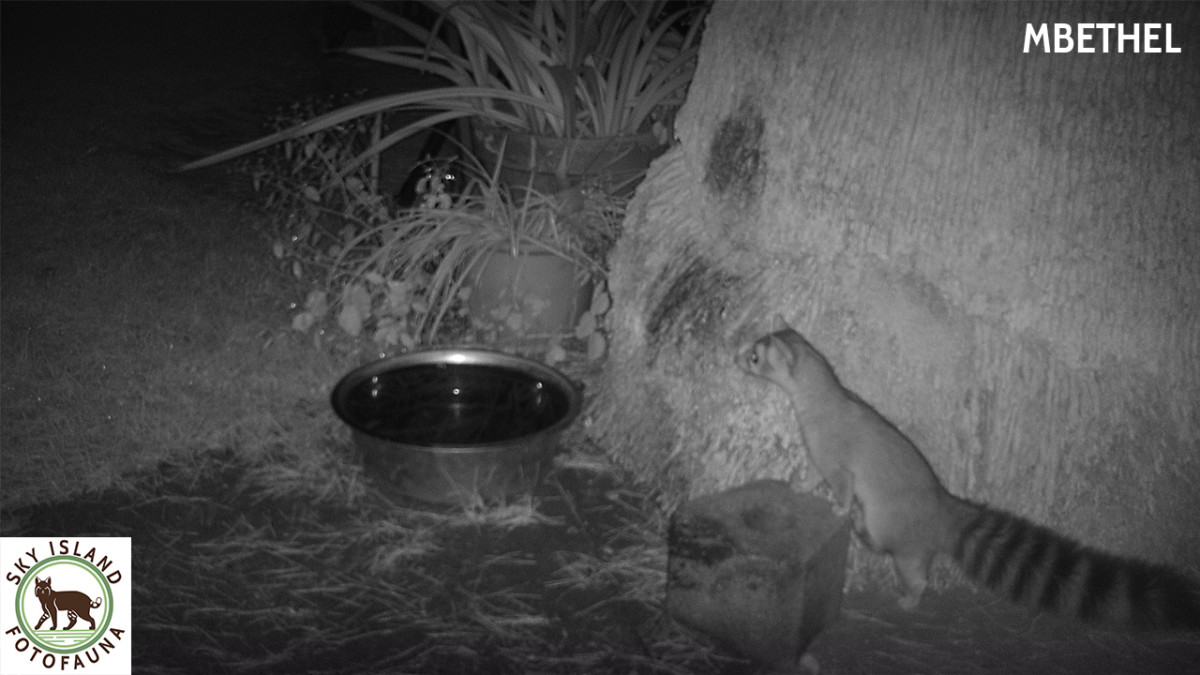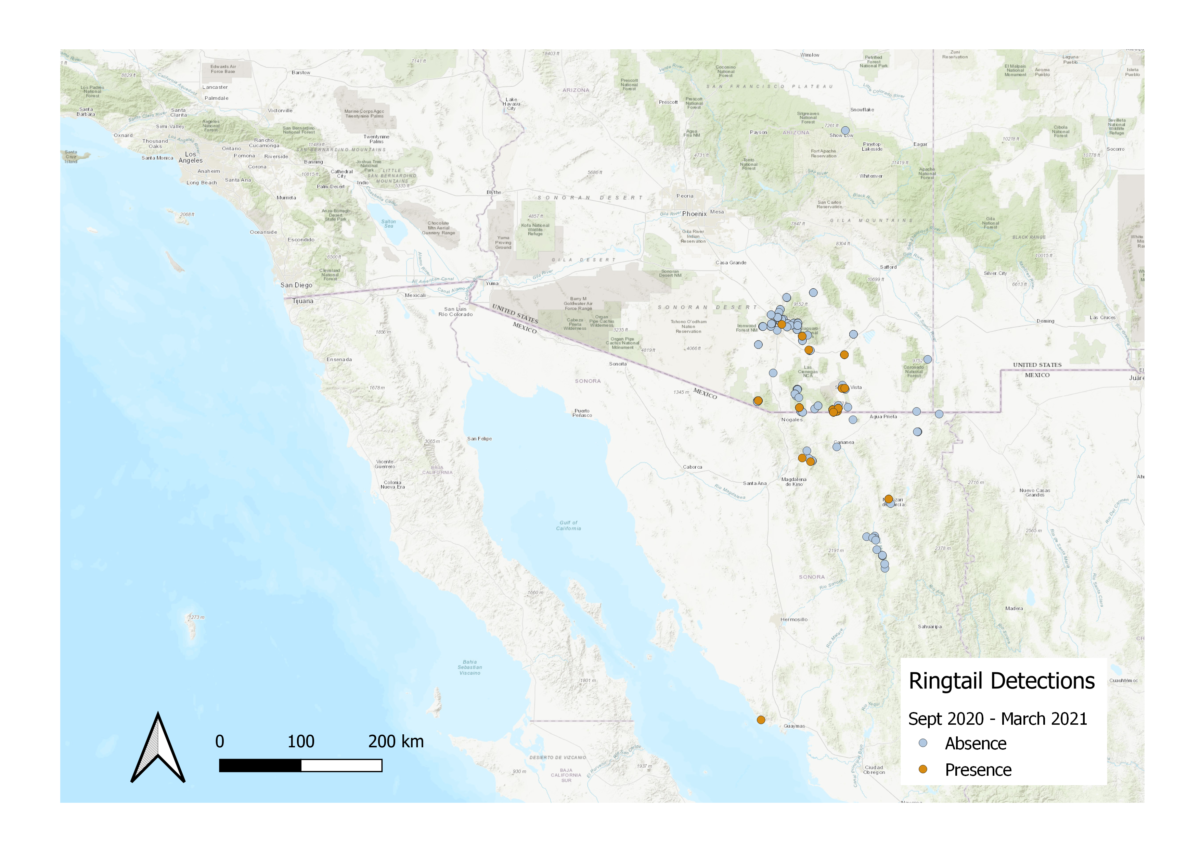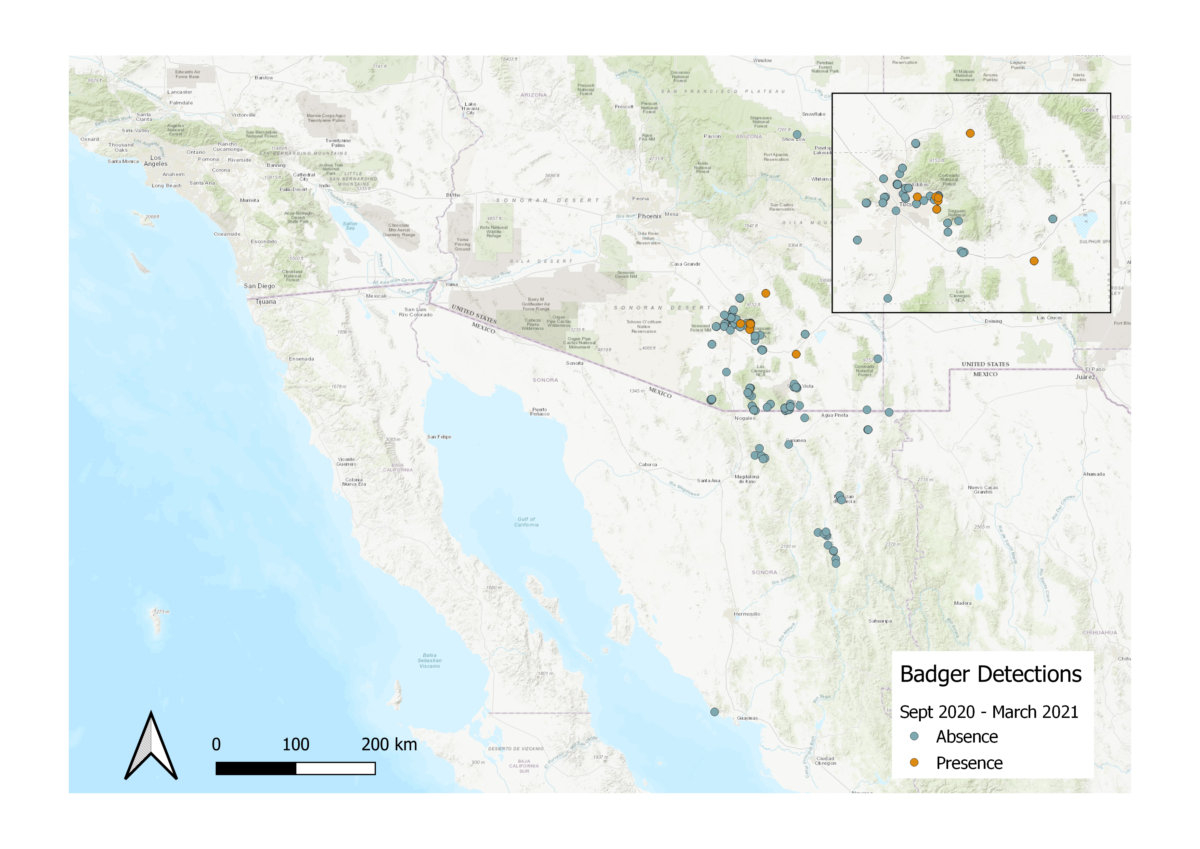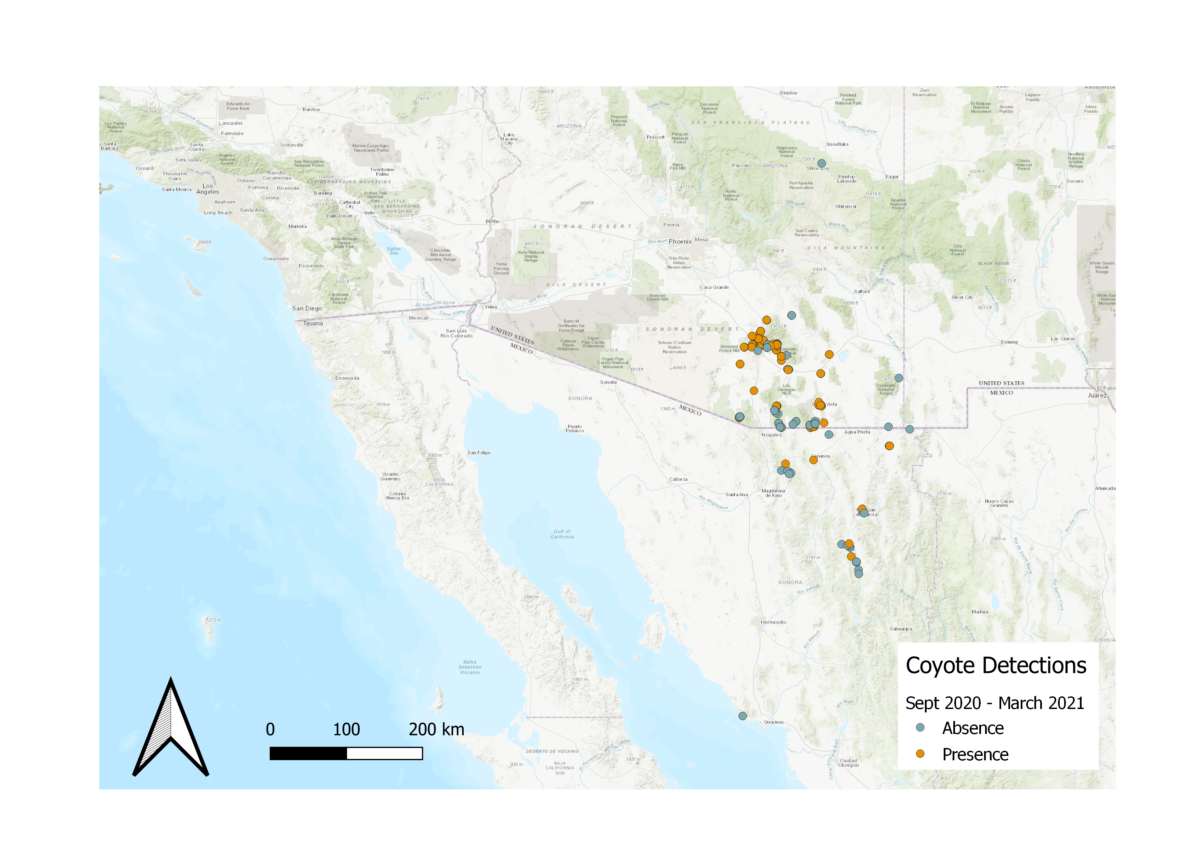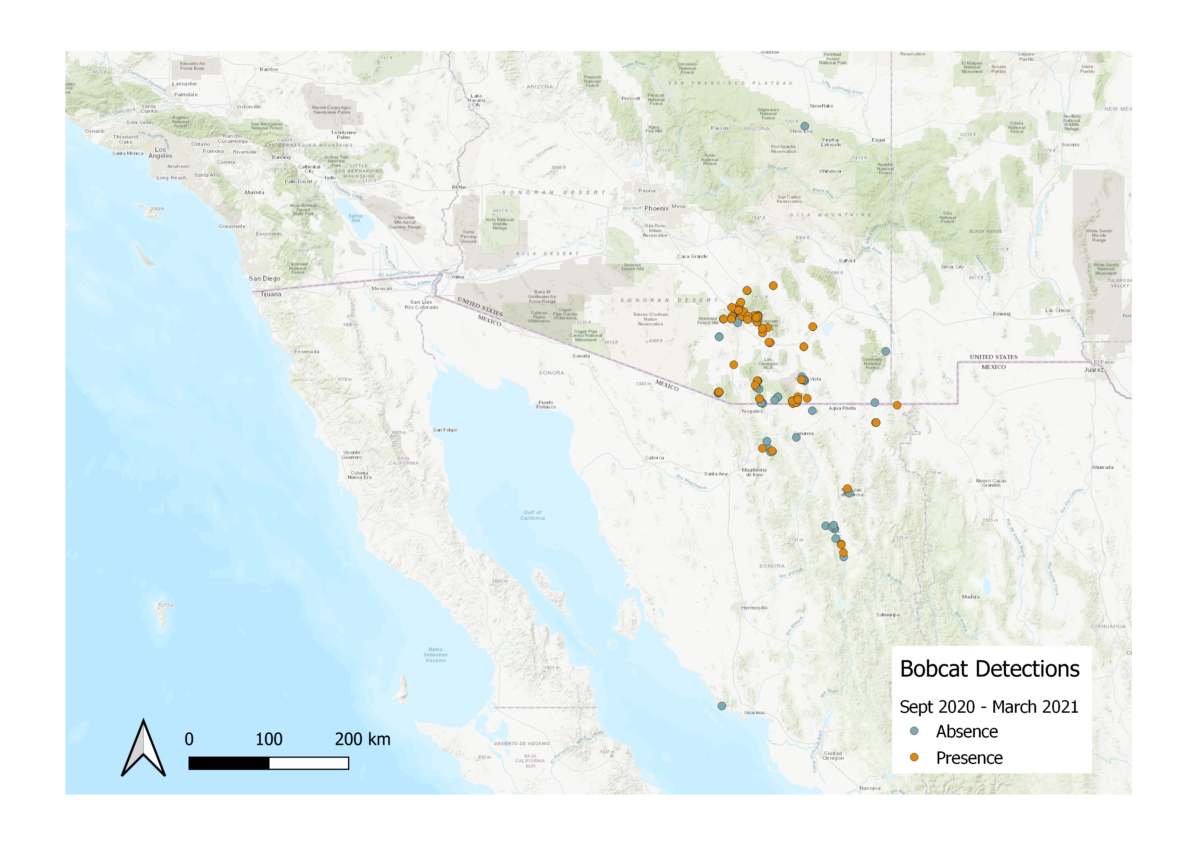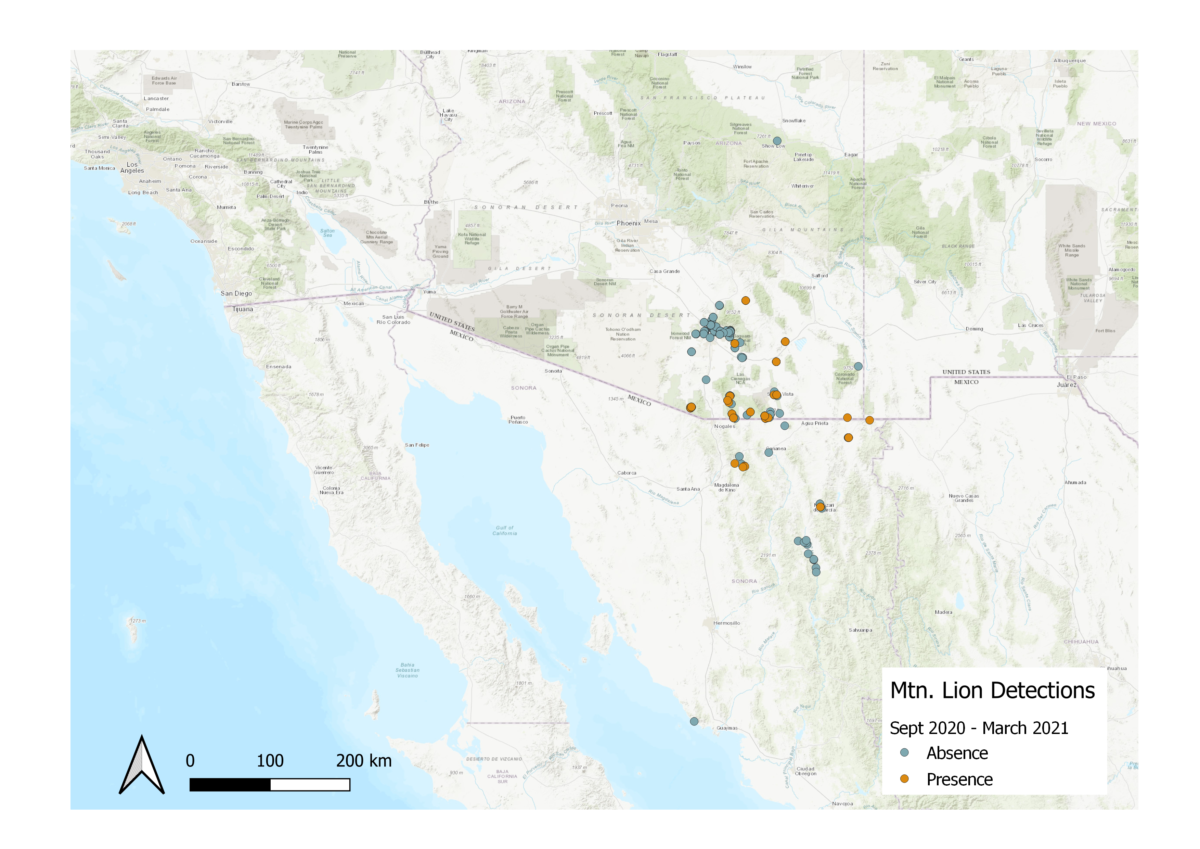It’s here—our first look at how the diversity of mammals and birds is distributed across the Sky Island region!
Since launching Sky Island FotoFauna in October 2020, volunteers and organizations in Mexico and the U.S. have contributed nearly 450 monthly checklists from this growing network of cameras. Each checklist adds another piece to the regional wildlife puzzle—helping us see more clearly where wildlife species are present and absent each month across the landscape. We want to understand the distribution of a wide range of species so that we can a) document the habitats that support a great richness of species and b) work to enhance protection for these places.
We are so excited to see the first FotoFauna distribution of species whose ranges are more mysterious than one might think.
Consider the ringtail for instance—we thought going into this project that this nocturnal raccoon-relative would only be found outside of the urban environment, but the ringtail has popped up on a FotoFauna camera in mid-town Tucson! They’re found to the south and east of Tucson as well as along the border and in Sonora, MX.
Similarly, we are finding some American badgers on the east side of Tucson and along the San Pedro River on the east side of the Rincon Mountains. We know from our Border Wildlife Study that they are present along the border in the Huachuca and Patagonia Mountains, so where will we detect these burrowing predators next?
Coyotes were incredibly common, showing up on 68% of the checklists so far and widely distributed across cameras in the U.S. and Mexico.
Felines are also commonly present across the FotoFauna camera network, and bobcats occurred on 49% of the checklists received over the last six months with a strong presence across the region and in urban areas like Tucson.
In contrast, mountain lions have only been present in 13% of FotoFauna checklists so far and are more common is larger undeveloped landscapes like along the U.S.-Mexico border.
One of the other interesting things we’re learning from the FotoFauna data is that the total number of checklist species detected is much higher at camera locations within 50 feet of drinkable water. Clearly in the increasingly arid Sky Island region, species of all kinds need water sources of all kinds.

